"Cuchulainn Slays the Hound of Culain"
by Stephen Reid
Cuchulainn (kooHOOlin), also spelled Cú Chulainn with many other variations, is a famous Irish mythological hero who appears in the stories of the Ulster Cycle, a series of tales revolving around the heroes of the Kingdom of Ulster (northern Ireland) in the early 1st Century.
Some variations of the legend say he was the son of Lugh the sun god; others say he was born of human parents. The nephew of King Conor, he was originally given the name of Setanta.
At a young age Setanta so outplayed the other youths in the sport of hurley (an Irish game like field hockey) that his future greatness could be seen by all of the court. The warriors of the Red Branch acknowledged him as a blood relative of the king and heard him proclaim before the Druids in the Hall of Heroes: "I care not whether I die tomorrow or next year, if only my deeds live after me."
Artist Unattributed
Setanta earned a new name after a remarkable act of courage. King Conor, invited to a banquet at the house of Culain, a blacksmith, asked Setanta to accompany him. Setanta was playing a game of hurley at the time and said he would follow his uncle shortly. When everyone sat down to the feast, Culain asked the King if all the expected guests had arrived and King Conor replied that they had, forgetting about Setanta. Culain unchained his huge hound to guard the house.
Unaware of the danger ahead the young boy arrived at Culain's house. The vicious dog leapt at Setanta, who had only his hurley stick and ball with him. Undaunted by the ferocious beast the boy flung the ball down the animal’s throat. The hound was forced back by the blow and Setanta was able to grab the hound by its legs and smash its head on the stone courtyard.
When Conor heard the hound howling he remembered Setanta and ran outside expecting to find him torn to pieces. He was amazed to see him unharmed, standing above the dead hound. The blacksmith was distraught at the sight of his fallen dog. Setanta, although without blame in the duel, vowed to take the place of the dog, protecting the pass into Ulster, and became the Hound of Culain – Cuchulainn.
Artist Unattributed
Cuchulainn was short in stature yet no one could look upon him in his splendor without blinking. The heat of his body could melt snow and ice for yards around. He glowed red and when he dipped his body in water the water hissed and turned to steam.
His beautiful hair was tri-colored. Next to his skin the hair was brown, in the middle it was red and on the outside long golden yellow curls fell freely down his back. About his neck were a hundred tiny links of red gold flashing, with pendants hung from them. His headgear was adorned with a hundred different jewels. In battles, he fought from his chariot, driven by his loyal charioteer Láeg, and drawn by his horses, Liath Macha and Dub Sainglend.
Artist Unattributed (Stephen Reid?)
Although generally a gentle and sensitive person, Cuchulainn was known for his terrifying battle frenzy - or riastradh - in which he became a fearsome superhuman creature rather like the Hulk - an unrecognizable monster who knew neither friend nor foe.
It was prophesied that his great deeds would give him everlasting fame, but that his life would be short - one reason he is compared to the Greek hero Achilles.
Stephen Reid Illustration 1912
Cuchulainn's greatest achievements occurred during "The Cattle Raid of Cooley". It tells of a war against Ulster by the Connacht Queen Medb. The fighting men of Ulster had been disabled by an apparent curse and the only person fit to defend it was 17-year-old Cuchulainn. However, Medb's army took Ulster by surprise because Cuchulainn was off on a tryst when he should have been watching the border. Thereafter, he single-handedly waged a guerrilla campaign against the advancing army, then halted it by invoking the right of single combat, defeating champion after champion in a stand-off lasting months.
During these fights Cuchulainn is both helped and hindered by supernatural figures. Before one fight a beautiful young woman comes to him, claiming to be the daughter of a king. She offers him her love, but he refuses her. The woman reveals herself as The Morrighan, the Goddess of War, and in revenge for this slight she attacks him in various animal forms while he is engaged in combat. As an eel, she trips him in the ford, but he breaks her ribs. As a wolf, she stampedes cattle across the ford, but he puts out her eye with a slingstone. Finally she appears as a heifer at the head of the stampede, but he breaks her leg with another slingstone.
After Cuchulainn finally triumphs, The Morrighan appears to him as an old woman milking a cow, with the same injuries he had given her in her animal forms. She gives him three drinks of milk, and with each drink he blesses her, healing her wounds.
After a particularly arduous combat he is visited by another supernatural figure, Lugh, who reveals he is his father. He puts Cuchulainn to sleep for three days while he works his healing arts on him. While he sleeps the youth corps of Ulster come to his aid but are all slaughtered. When Cuchulainn wakes he undergoes the most spectacular riastradh yet. He makes a bloody assault on the Connacht camp and avenges the youth corps sixfold.
Illustration entitled "Cuchulainn Carries Ferdiad Across the River"
During these battles Cuchulainn is forced to fight his longtime friend, Ferdiad. It was displeasing to Cuchulainn to have to fight his friend of old. He tried to dissuade Ferdiad against fighting by reminding him of the days when they had trained together in their youth. Ferdiad would not be swayed. Lest he weaken under Cuchulainn's pleas he responded only with taunts against his friend, now foe. They fought an epic duel which lasted for four days. Eventually, after a tremendous effort, Cuchulainn killed Ferdiad and then fell into a trance of sorrow and weakness.
The death of his best friend was just one of the great tragedies of Cuchulainn's life. Years earlier, he had unwittingly killed his own son by warrior woman Aife. Enraged because she had been forced to bear Cuchulainn's son after he defeated her in battle, Aife decided to turn her son into a weapon against his father. She trained her son in all aspects of being a warrior and then sent him to Ireland after first putting three taboos on him: first he was not to turn back, second he should never refuse a challenge, and third he should never tell anyone his name.
When Conlaoch arrived, Cuchulainn asked asked his lineage, but Conlaoch could not tell it and so was challenged. In the terrible battle that followed the hero light came upon Cuchulainn and Conlaoch realised that he was fighting his father and that his mother had been treacherous. He cast his spear sideways so that it would miss Cuchulainn and shouted that he was his son, but it was too late. Cuchulainn had already thrown the terrible barbed spear which he had won from Aife. It was unstoppable once thrown and thus Conlaoch was slain.
Cuchulainn was thrown into a fit of rage and grief in which he lost his senses and started attacking anything in sight. In order to save him and his friends from further tragedy, a Druid cast a spell upon Cuchulainn causing him to see the waves of the sea as armed opponents. He battled with the waves until he collapsed from exhaustion.
"YOUNG CU CHULAINN" by May Yeo
As is the way with such heroes, Cuchulainn died on the battlefield. His body was then propped against a large rock. With a spear in his hand, a buckler on his arm, and a defiant attitude even in death, he was able to strike fear into his enemies.
The image of Cuchulainn is invoked by both Irish nationalists and Ulster unionists. Irish nationalists see him as the most important Celtic Irish hero, and thus he is important to their whole culture. By contrast, unionists see him as an Ulsterman defending the province from enemies to the south. In more modern times he is often referred to as "The Hound of Ulster."













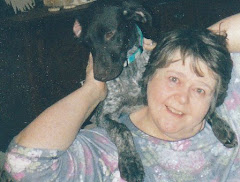



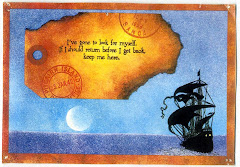














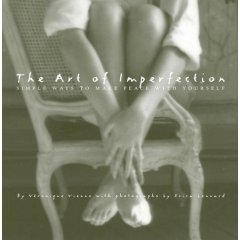


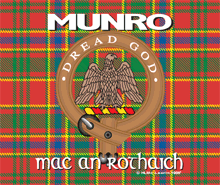
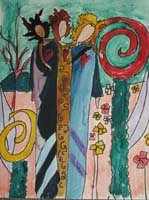

6 comments:
For some reason I am thinking this Gaelic name was a term of affection for the Irish Wolfhound in the Diana Gabaldon books as well...(The Cu Culainn...or whatever you wrote! LOL) Love hearing these Celtic myths, Julie!
Julie I was thrilled to read this, having never heard the story before. Wow! Beautiful images. I love that 2nd picture. Wasn't he something?
Love this story, you always have so much knewledge to share....
I am busy trying to catch up with my house cleaning, clothes washing, you know, the stuff. I feel fine and my eye is good. I spent a few days really wondering when the pain would stop. But this too has passed.
About spring!!! It has been snowing,raining,hail, wind and a couple of times we have seen the sky...The grass is green and the flowers are coming into their own, but,"I Want Sun!" Happy Easter, Mary
Hi there,
Just want to say that I love your blog. I'm from Ireland and I've grown up with these stories. I've never shared a link to my blog in a post before for fear of seeming pushy, but I genuinely think there's somethings on it you'd enjoy. So, here goes: http://childofdanu.blogspot.com/
I'm not sure everything on there will be of interest to you, but if you browse through my older posts I've a few Celtic-related ramblings dotted about.
Well, nice to meet you!
I am trying to find a nice name for my female dog. My male dog's name is Rebel so I was wondering can anyone tell me the name of the hound that was killed in this story. It is a lovely Irish story, I love everything Irish. Perhaps someone could give me some tips on names to call the dog as I would love to call it something Celtic. I named my other dog after the Rebel Co, Co Cork. The dog was born in Roscommon so maybe some Celtic Roscommon names might suit. Thank you.
Maire- I known this story since I was a kid and in all my life I've never heard the actual name of the dog. He was only ever referred to as 'Cullen's Hound'. As far as I remember the name 'Faolin' (Fway-linn) has some connotation with a loyal dog and, while it was originally a boy's name, it's generally girls who are called it in Ireland these days. Just thought if you were looking for an Gaelic name for your pooch you might like it.
Post a Comment